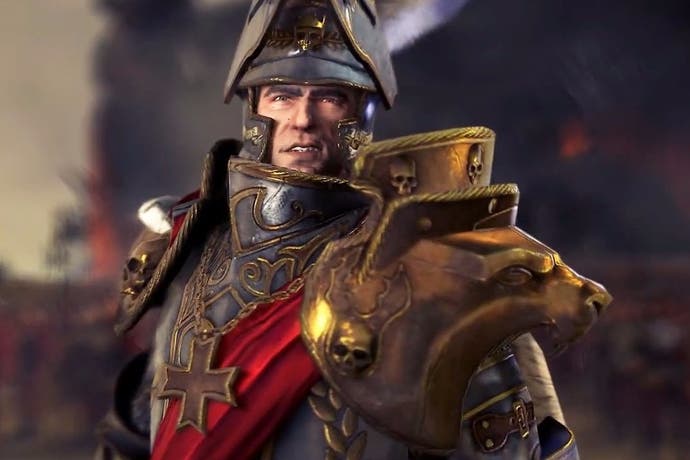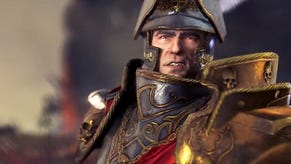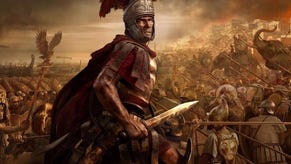Total War: Warhammer Review
Franz with benefits.
If you've played Rome: Total War, you have to remember the first time you encountered the Carthaginians. Here you'd been, building proper Roman armies, with swords and shields and bows and arrows, designed to defeat nations with fewer resources and aging technology. And then you run into Carthage, and they've got war elephants. You weren't ready for war elephants.
Total War, in my experience, has always played out a bit like a game of rock, paper, scissors. Swords tend to beat spears. Spears tend to beat cavalry. Cavalry tend to beat swords. The better units can defy these rules, sure, but it's almost always a good place to start. Up until the point at which you stand against an elephant charge and the whole thing falls apart. There is, of course, a counter to these units too; a new set of rules to add to the list. But for a little while, you're not sure what to do. In Rome: Total War, this feeling is a noteworthy exception, a rare blind spot in a game that wants you to understand its systems. In Total War: Warhammer, this seems to happen in almost every battle. And that's fantastic.
There's never been a Total War game with a roster this diverse. Alongside your typical infantry, ranged units and cavalry, there are flying war machines, giants, magic casters and legendary lords. There are infantry that specialise in taking down monstrous units and there are ranged units that can hold their own in melee combat. I think I now understand why the tabletop game has so many rulebooks. It can, at times, be a little overwhelming if you're not familiar with Warhammer Fantasy, but it's worth it in the end. Improving your army isn't just a case of replacing good infantry with great infantry, it can now be much more drastic than that. A late-game upgrade may see you adding a couple of steam tanks, or a gigantic arachnarok spider to your front line, and that feels way more important.

As a result, I never really stopped looking forward to the next battle in Total War: Warhammer. We've all been guilty of auto-resolving encounters in previous games, but here there's always something fresh to play around with: a new unit, spell, or item ability. I'm not incredibly proud to admit that, at one point, I declared war on a neighbouring human faction, largely because I wanted to see Karl Franz's new flying mount in action.
Speaking of which, it's refreshing to actually want to throw your named characters into battle. In recent Total War games, your general is used largely for applying buffs to your troops, only entering combat when victory is assured, or you have no other choice. In Total War: Warhammer, your heroes act like heroes. I built my Karl Franz character (through ability unlocks and item selection) to be the best solo combatant he could be and so most battles would see him in the thick of combat, seeking out the enemy general to slay. He still provided buffs for nearby troops, but that was far from his only purpose. After years of anxiously watching my general lose a few bodyguards and overcommitting other units to save him, this is a welcome, welcome change.
That being said, some heroes do still need protecting. With a few exceptions, the magic casters usually want to stay out of melee combat, lobbing fireballs and debuffs from a safe distance. Just like in the tabletop game, you'll be relying on favourable Winds of Magic to actually cast spells in the first place, which comes down to a dice roll at the start of each battle, but can also depend on your position on the world map. The Chaos Wastes, for example, tends to attract more magical energy. Thematically, I really like this idea. It adds an element of risk to any army built around magic and also introduces another important link between the campaign map and the battles themselves.
Despite what we saw in the game's initial reveal, magic isn't anywhere near as powerful as the developers first suggested. Spells which cause direct damage are very unlikely to wipe out entire units, and there's a lot of unpredictability involved, depending on how both the unit and the spell decides to move after casting. On one hand, it's a huge relief that these spells aren't hugely overpowered, but I do find myself wondering if perhaps they went too far the other way. I'm yet to see a battle that's been won, or lost, because of magic use. As a result, I tend to stick to spells that buff and debuff single units, which feels like a better use of magical energy, but is undoubtedly more boring.
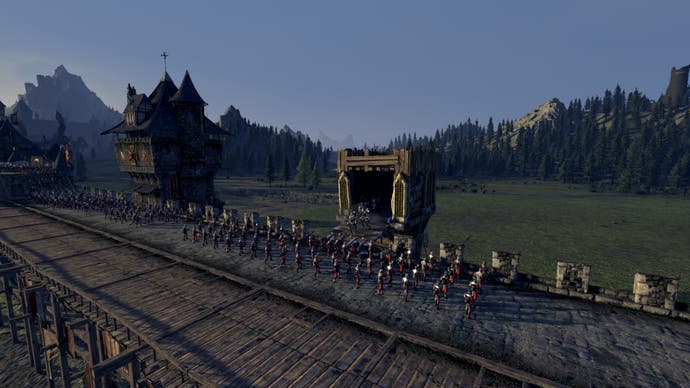
Outside of the battles themselves, the campaign map also brings in some interesting ideas from the Warhammer universe. Each of the five playable races encourage different play-styles, which helps your second campaign feel like more than just a change in starting position and unit unlocks. With the exception of the Empire, who feel quite familiar to Total War, each race has a new mechanic to consider. The Greenskins demand warfare and their armies can trigger a WAAAGH! (which summons a second horde to fight by their side) if involved in enough successful battles within a short period of time. However, if an army's bloodlust isn't sated, they'll fight amongst themselves.
The Dwarfs are a proud race and spend much of their time considering past grudges, which must be righted before they can claim victory in the campaign. The Vampire Counts and Chaos Warriors both seek to increase the level of corruption within enemy provinces, prior to an invasion and will usually cause havoc for their enemies long before any battle actually takes place. Five playable races may not sound like much, in comparison to previous Total War titles, but there's so much more going on here than we're used to.
Each of these campaigns has the player starting with a single city to manage and some immediate concerns to deal with - usually you'll want to start by focusing on the factions that have broken away from your own race. If you're playing as the Dwarfs, for example, it's a good idea to convince the nearby dwarfish faction, the 'Barak Varr', to join you - either through friendship or through force. Starting small helps ensure the player isn't overwhelmed by an empire's worth of decisionmaking, but it does feel like most campaigns play out in a fairly similar fashion. It makes sense to unite the various factions that share your race, and after that, you're limited in which cities you can occupy (Dwarfs can only take cities belonging to Greenskins and vice versa). Inevitably, a little of the Total War sandbox experience has been lost here.
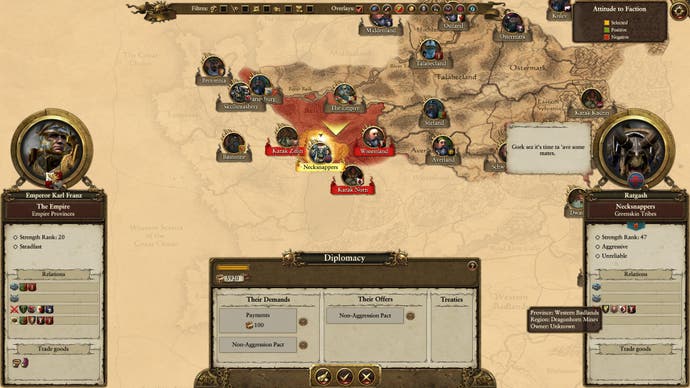
Also, with five races destined to eventually dominate the map, Total War: Warhammer does feel like more of a free-for-all than other games in the series. You're rarely given the chance to sit still for a few turns and focus on your infrastructure, because you can't help but get dragged into the next conflict. On my second playthrough I refused to make any alliances whatsoever, because they proved such a liability, with any potential ally usually having five neighbours, three of which were programmed to hate them. I don't want that kind of heat! But even friendless, I found myself, often, at war with multiple factions. This isn't necessarily a bad thing, but it can feel pretty intense at times, especially when you realise that some enemies will very happily raze entire cities to the ground, because they're simply unable to occupy them. I understand a Greenskin horde wanting to burn and pillage, but it doesn't feel right to watch the same happen in a conflict between the Dwarfs and the Empire.
The end-game is similar to that of Total War: Attila, although instead of a Hunnic invasion from the east, it's a Chaos horde that comes pouring down from the north. This, once again, helps counter the big problem that comes with having a player grow more and more powerful - eventually, nobody can stand against them. The Chaos provide a necessary equal in these final turns, and also, they're the perfect end-game boss. They're properly evil.
We've spent years talking about these two franchises coming together. We've known it could be the perfect crossover, if handled correctly, and Creative Assembly has done an exceptional job here. Not only is this the greatest roster of units we've ever seen in a Total War game, I think the series has also picked up some valuable lessons from its tabletop compatriot. This is still a game of rock, paper, scissors and understanding systems, but it's also a game about heroes. Karl Franz, Thorgrim Grudgebearer, Grimgor Ironhide. These names mean something in the Old World, and you can't help but buy into that whilst you're playing. You'll spend more time and resources than you should, unlocking their best abilities and items. You'll charge them headfirst into the biggest fight on the battlefield and you'll keep the camera zoomed in all the way as you do it, convinced that they're single-handedly winning the day. In a world of fantasy and magic, it's fun to play the legend, not just the general.
